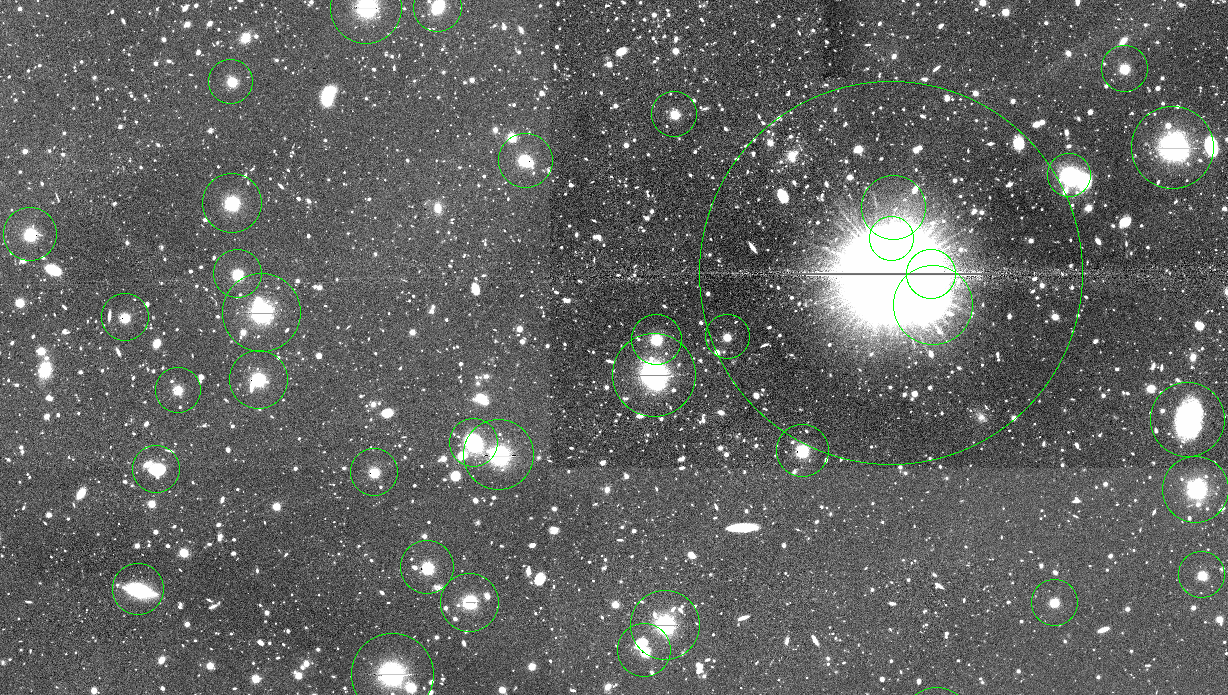Objects around bright stars likely have bad photometry and are flagged by the pipeline. This page summarizes the current version of the bright star masks. As described in the pipeline paper and data release paper, we use NOMAD catalog as a reference catalog of bright stars. We flag objects around saturated stars within certain radii and this mask radius is evaluated from cross-correlating the HSC detection with the bright star sample. We use
radius= A0*10**(B0*(C0 – mag)) + A1*10**(B1*(C1 – mag)), where A0=200, B0=0.25, C0=7.0, A1=12.0, B1=0.05, and C1=16.0
Note that we apply masks with the same radius for all the filters. Here are some examples:
Caveats
- The masks are currently very conservative: the radii extend to regions where the source detection seems to be affected: either showing depletion (bright star wings) or suspicious enhancement (background over-subtraction around brightest stars). Some masks are really big (larger than patches).
- The masks do not necessarily imply the photometry is affected, it only assumes the source detection is. The photometry is probably fine down to smaller radius.
- We cut the star catalog at mag < 17.5 (HSC point source saturation limit). The NOMAD star catalog however contains a small fraction of galaxies. Some galaxies (brighter than 17.5) may be wrongly masked. Very roughly, 5-10% of objects brighter than 17.5 are galaxies.
- Each star mask has the same size in all HSC filters, set from the brightest magnitude among optical bands. As a consequence, some masks appear much larger than the star extension in filters where the star is not the brightest.
- The reddest band used to calibrate the mask size is r or i. Some very red stars might not be properly masked in z or y-band.

